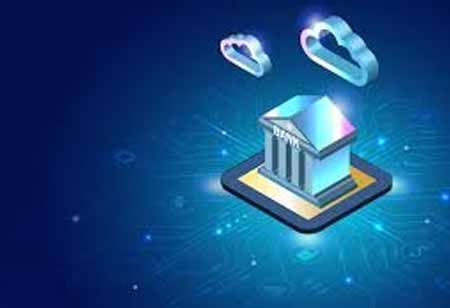THANK YOU FOR SUBSCRIBING

By
Banking CIO Outlook | Thursday, April 27, 2023
Stay ahead of the industry with exclusive feature stories on the top companies, expert insights and the latest news delivered straight to your inbox. Subscribe today.
Technologies mitigate security lapses, raise consumer happiness, and strengthen regulatory adherence.
FREMONT, CA: Banks have been at the forefront of the digital revolution, and the pandemic has only accelerated this trend. From hyper automation and RPA to embedded banking, open banking, fintech, neo banks, blockchain, cryptocurrency, and machine learning, banks are leveraging technology to offer better services to their customers. Technology advancements in the banking sector improve operational effectiveness and security while also enhancing the overall consumer experience. Anti-money laundering (AML) and know-your-customer (KYC) solutions, accelerate and improve with artificial intelligence (AI). On the other side, smart contracts powered by blockchain simplify financial transactions and improve transparency.
• Automation
RPA and machine intelligence could transform banking by automating manual tasks through hyper-automation. Collaborative intelligence, which blends human knowledge with cutting-edge technology, can allow AI-enabled decision-making and rethink work.
Banks can provide their clients with top-notch financial services while reducing operating expenses by employing AI. Automated customer service interactions are made possible by AI-powered solutions like chatbots and virtual assistants. Consumers can also get information about their accounts and clarify doubts regarding them. AI-based biometrics increase AML applications and KYC checks, as well as fraud detection and security. Additionally, alternative credit score modelling powered by machine learning (ML) algorithms helps banks make better lending judgments. Tools with computer vision capabilities also make it easier to analyse documents, which helps banks manage compliance and enrol new customers. It enables a better understanding of the risks associated with purchases and investments early in the process. AI examines enormous financial information to enhance risk evaluation and financial forecasting, which enhances investment choices.
• Embedded Banking
Banking that takes place outside of online and mobile platforms or conventional bank locations. Banks are working to provide capital to clients at a time that is most convenient for them, from purchase now/pay later loans to offering mortgages and personal loans through house contractors, veterinarians, and attorneys. Even opening bank accounts using an organisation's accounting software is conceivable.
• Open Banking
When banks use an end-to-end strategy, a successful and lasting client experience is guaranteed. An alternative technology-driven technique gaining traction is open banking, which enables financial ecosystems to continually develop and build a "Digitally Yours" ecosystem for its consumers.
Open banking links banks and non-banking financial institutions (NBFCs) to provide clients with more specialised and convenient financial services. Third-party developers can safely access client financial data through banking application programming interfaces (APIs) without compromising data compliance. Account aggregators are an additional component of open banking that let users manage all of their banking accounts from a single interface. NBFCs may also integrate banking functions into their apps and services using APIs from banks. With the use of integrated banking, NBFCs may validate client information efficiently, eliminating the need for human verification. Additionally, banking-as-a-service (BaaS), which enables banks to access new consumers through third parties and boost their income, is made possible by open banking.
• Fintech
This rapidly growing field combines money with technology and offers services to both consumers and businesses. To make financial services safer, quicker, and more effective, fintech companies employ cutting-edge technology like artificial intelligence, blockchain, and data science.
• Neobanks
Neobanking allows banks to exist entirely online, cutting down on startup and ongoing costs. Customers have a smooth and integrated banking experience attributable to cloud computing, open APIs, and other features. Neobanks offer a wide range of services, such as integrated workflow management and automatic payroll reconciliation. Neobanks also provide users with checking, savings, payment services, and loans using the mobile and digital infrastructure. By giving customers access to services across platforms and on-demand, they guarantee client convenience. Neobanks also charge reduced fees since they need less capital and money for operations than traditional banks do. Customers can even get pay-later goods from regulated financial service providers.
• Blockchain and Cryptocurrencies
Blockchain enables Bitcoin mining and markets. Blockchain increases transactional security and transparency by providing tamper-proof records of all financial transactions. Furthermore, it simplifies manual and paper-based activities while also increasing trade efficiency through transaction automation. Financial contracts perform better owing to smart contracts, which automate financial transactions. They also make peer-to-peer (P2P) payments possible by doing away with the need for middlemen. This significantly improves the effectiveness and speed of transactions, particularly cross-border payments. Decentralized finance (DeFi) also uses blockchain to minimise transaction costs and increase the accessibility of financial services.
• Quantum Computing
Processing enormous volumes of data with traditional computers require a lot of time and resources. Quantum computing solves this issue through faster and more efficient processing with secure computations. It helps banks optimise their portfolios and generate precise financial forecasts. As a result, startups are creating quantum computers to help banks with cybersecurity program development and derivative pricing.
• Immersive Technologies
Immersive technology provides an engaging and personalised client experience. Virtual reality (VR) and augmented reality (AR) enhance interactions between banks and clients. Virtual reality (VR) enables banks to teach staff members in engaging surroundings on a variety of banking procedures, products, and regulations. These technologies enable virtual showrooms where clients can explore autos in a computer-generated setting, and banks can speed up the loan application process. Customers can also communicate with banks in virtual settings through metaverse banking. To improve customer happiness and loyalty, banks assure a more engaging client experience by utilizing immersive technology.
In 2023, digital banking will encompass more than just new technology and digital services, but a complete reimagining of how banks engage and interact with their customers. Banks will have numerous opportunities in 2023 to use data-driven personalization and digital tools to get to know their customers, offer them guidance, and assist them in achieving financial wellness.
THANK YOU FOR SUBSCRIBING
Be first to read the latest tech news, Industry Leader's Insights, and CIO interviews of medium and large enterprises exclusively from Banking CIO Outlook
I agree We use cookies on this website to enhance your user experience. By clicking any link on this page you are giving your consent for us to set cookies. More info



